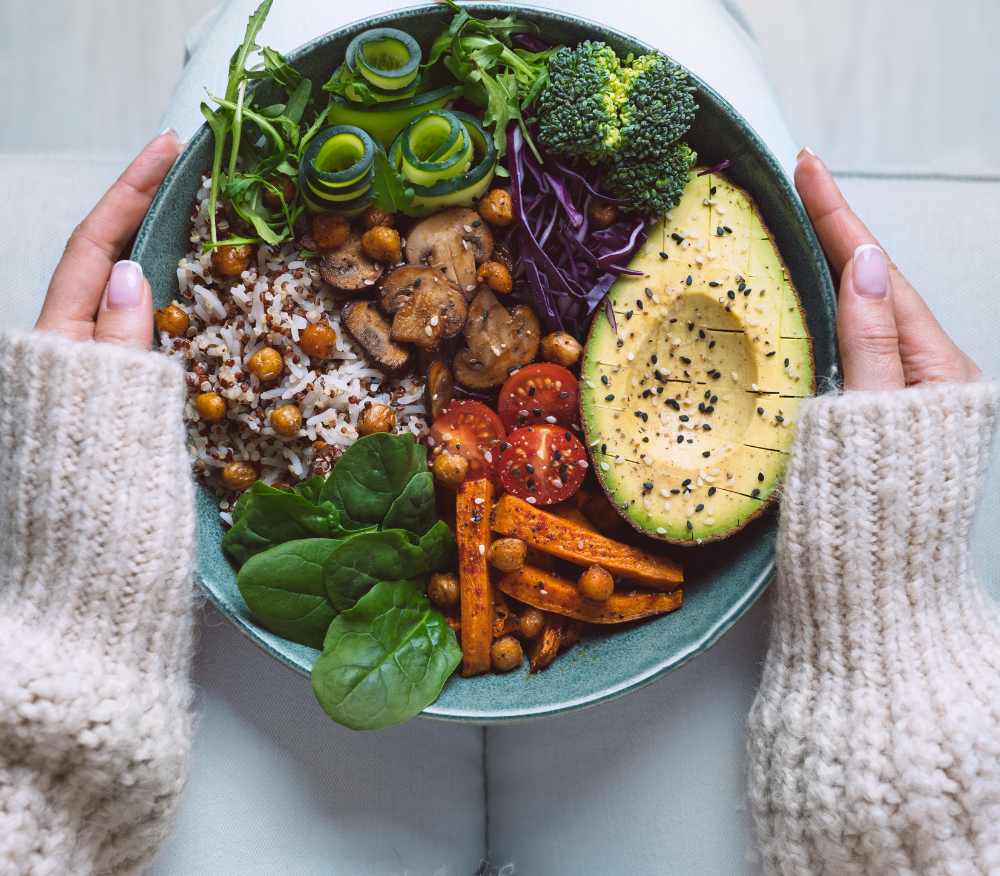When it comes to looking after your gut health, 30 is one number to remember - because it’s the amount of dietary fibre (in grams) that we’re recommended to eat each day.
What’s that got to do with gut health?
Good question. Fibre is a type of carbohydrate that we don’t break down. Instead of being digested and absorbed, it travels to the large intestine (colon) where it feeds the gut microbes that live there. When gut microbes digest fibre, they release compounds known as short chain fatty acids, which help to keep the lining of the gut healthy. Fibre also moves waste through the gut, bulks out and softens your poo, helping to prevent constipation.
Recent research also suggests that a high-fibre diet is one of the best ways to a thriving and diverse microbiome. In short, fibre is excellent nutrition for your gut and its microbes!
Right, so it’s 30 grams a day, every day?
That’s right - although there will be days when you don’t hit 30 that’s fine! The aim is to reach 30 grams of fibre *most* of the time. This is the amount that’s been associated with a lower risk of bowel cancer, type 2 diabetes, and heart disease. We’re still learning the optimal amount for microbiome health, but until we get there this is a great target to aim for. Despite this, the average intake in the UK is about 20 grams a day - so most of us could benefit from eating more.
Which foods are high in fibre?
Fibre is found in plant foods - so think fruits, vegetables, lentils, beans, wholegrains, potatoes with their skin, nuts, and seeds. By wholegrains we mean that the food contains all parts of the entire grain - the bran (the fibre filled outer layer), germ (starchy middle layer), and endosperm (where the vitamins and minerals are stored).
Examples of wholegrains include wholewheat flour, wholemeal bread, brown rice and wild rice, oats and quinoa, oatcakes, wholewheat pasta and rye bread.
How can I tell how much fibre is in my diet?
There’s no way to know just by looking - unless you’re a nutrition pro! But once you get used to what 30 grams looks like, it’s much easier. As a rough guide, aiming for five servings of fruit and veg each day, having wholegrains with two of your three main meals, and including things like seeds, nuts and dried fruit for snacks will get you most of the way there. For a quick comparison between foods, check the nutrition label - any food containing 6g or more of fibre per 100g is considered a high-fibre food.
If you’re unsure of where you’re starting from, you can use a digital food diary to calculate your fibre intake for you - and from there you can see where you can make changes.
Three easy ways to boost fibre intake
- My secret weapons for boosting fibre intake are seeds and pulses - think beans, peas and lentils, linseeds, and chia seeds - all these are super sources of fibre.
- Try adding lentils to soups, stews, curries and bolognese to boost the fibre intake, and throw seeds on salads, cereal or into yoghurt.
- Breads with added seeds are also a great source of fibre, sometimes containing up to 5 grams or so of fibre per slice.
Anything else to know?
A key thing to remember is to take it S-L-O-W-L-Y when increasing your fibre intake. Going from a low to a high fibre diet can result in an increase in bloating and gas, as the gut bacteria get busy fermenting the extra food. Give your gut time to adjust by adding one change to your diet every few days - so start off with a change to breakfast, then make your next change a few days later.
The other thing to remember is to drink plenty of fluid, as some types of fibre absorb water in the gut, so drinking plenty of fluids when you switch to eating more fibre is important.
I'm sold, but what does 30 grams of fibre actually look like over a day?
I’m glad you asked, as I’ve put together five days of simple menus, each containing 30 grams of fibre - designed to help you better understand how to get to 30. Ready? Let’s check them out.
Please note, these menus are a guide to 30 grams of fibre, and not designed for any specific health needs.
Day 1

Breakfast: Porridge and fruit
Half a cup of oats, ½ cup raspberries and blueberries, 1 tbsp mixed seeds, milk
Fibre: 9g
Lunch: Soup and pitta
Half a pot of lentil red pepper soup, 1 wholewheat pitta, cheese, and a quarter of a cucumber
Fibre: 11.5g
Dinner: Bolognese
Wholewheat pasta (65g dry weight), 1 serving of meat bolognese, cheese as you like
Fibre: 7g
Snacks: Oats n fruit
Chocolate flapjack, banana
Fibre: 3.4g
Total: 30.8g
Day 2

Breakfast: Eggs ‘n’ Toast
2 slices seven seed bread with 2 eggs, 2 clementine
Fibre: 12.1g
Lunch: Classic tuna JP
Medium baked potato with skin on, served with 3 tbsp sweetcorn, tuna, coriander, red onion, and yoghurt
Fibre: 6.4 g
Dinner: Salmon Quinoa Bowl
Half a quinoa and mixed grain pack, Tenderstem broccoli and herby salmon fillet
Fibre: 7.3g
Snacks: Fruit, PB and Choc
1 apple sliced with 1 tbsp peanut butter, 2 squares dark chocolate
Fibre: 5g
Total: 32g
Day 3

Breakfast: Muesli and fruit
50g no added sugar muesli, 1 sliced banana + milk
Fibre: 5.6g
Lunch: Falafel lunchbox
100g mixed salad, 50g falafels, 100g reduced fat hummus
Fibre: 12.5g
Dinner: Hey Ramen!
Broccoli (80g serving), smoked tofu, 1 tsp sesame seeds, miso broth, boiled egg and wholemeal noodles (100g dry weight)
Fibre: 11.6g
Snacks: Fruit n nut
Large handful mixed nuts and raisins
Fibre: 2.9g
Total: 32.6 g
Day 4

Breakfast: Fruity bagel
Wholemeal bagel toasted and topped with smashed blueberries (80g) and cream cheese
Fibre: 8.8g
Lunch: Tofu mega sarnie
Two slices seven seeded bread, smoked tofu, tomato, half an avocado, dressing
Fibre: 10.5g
Dinner: Pizza n Salad
½ veggie sourdough pizza, mixed salad, 7 cherry toms
Fibre: 8g
Snacks: Fruit and corn
100g grapes, bag popcorn (3g)
Fibre: 4.3g
Total: 31.6g
Day 5

Breakfast: Mango smoothie
Frozen mango (150g) live yoghurt, 1 banana, 15g oats
Fibre: 5.2g
Lunch: Wrapped Up
Wholemeal wrap with smoked mackerel and salad
Fibre: 7.1g
Dinner: Dahl and rice
Black lentil dahl Makhani with brown rice (65g dry weight), coriander and yoghurt
Fibre: 10.4
Snacks: Fruit, nuts, biccies
4 dried apricots, a handful of nuts, 2 digestives
Fibre: 9g
Total: 31.7g
Sources
Scientific Advisory Committee on Nutrition. Carbohydrates and Health. TSO Station Off. (2015). Link.
Hooper B, Spiro A, Stanner S. 30g of fibre a day: An achievable recommendation? Nutr Bull. (2015). Link.
O’Grady J, O’Connor EM, Shanahan F. Review article: dietary fibre in the era of microbiome science. Aliment Pharmacol Ther. (2019). Link.



